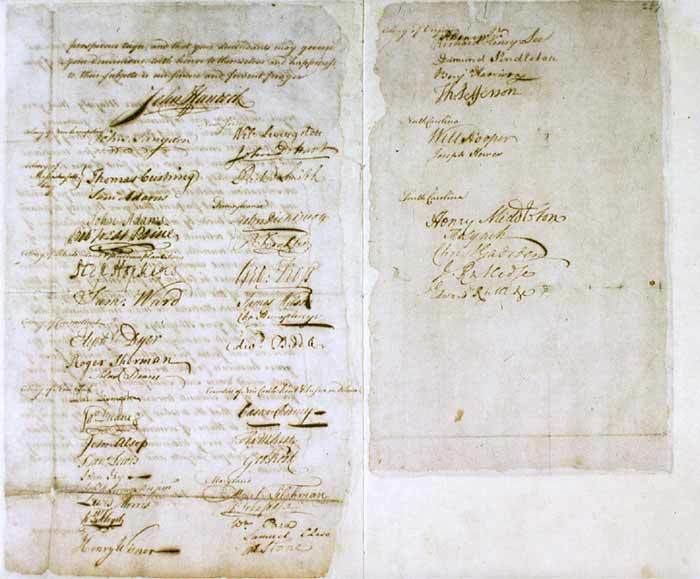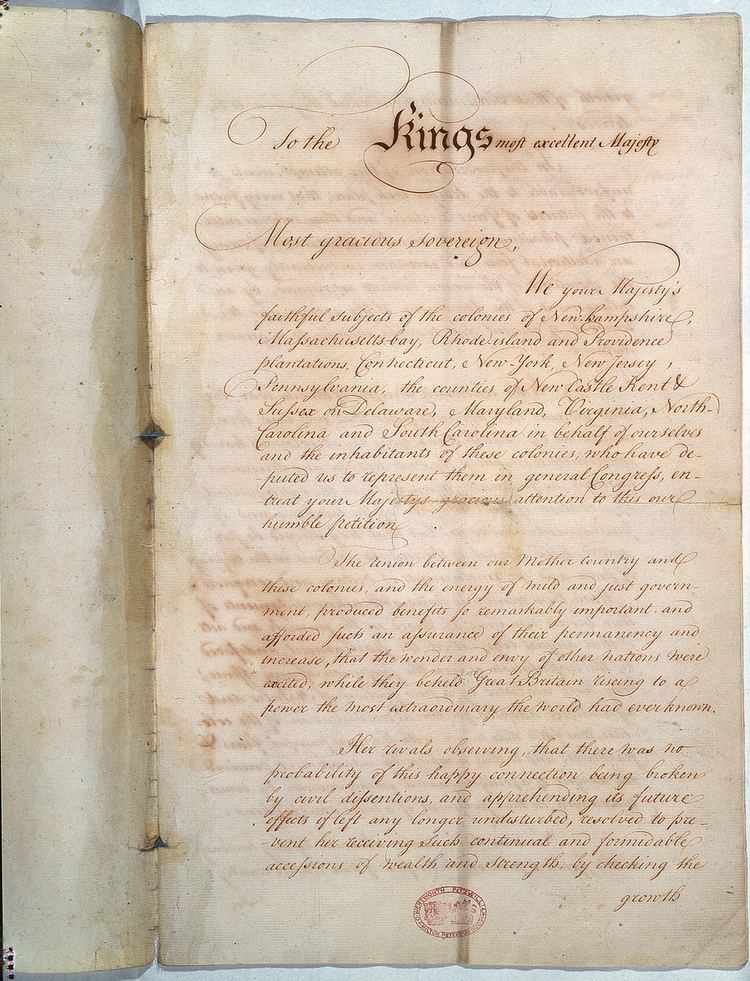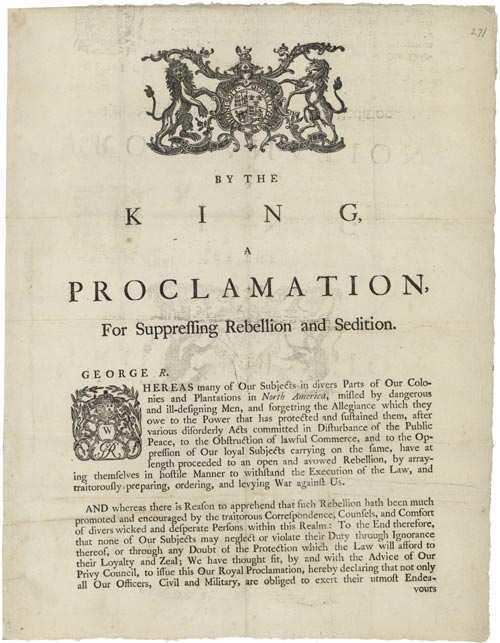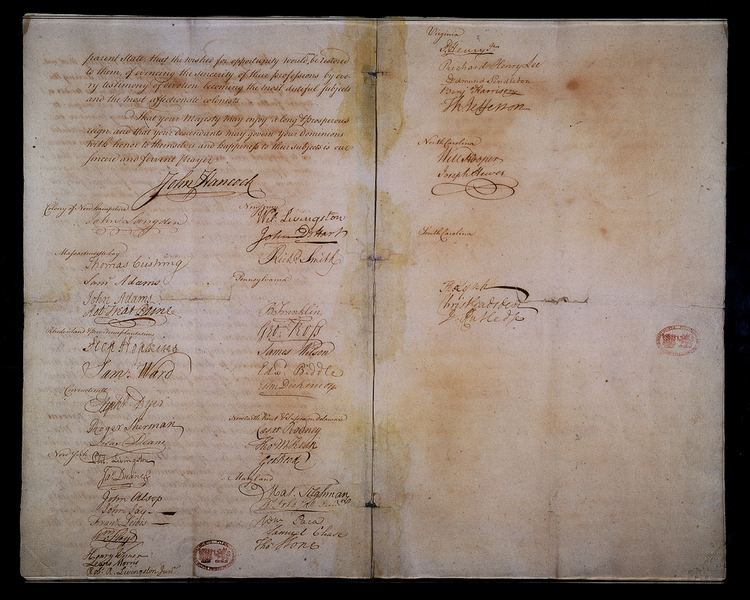Date 8 July 1775 | ||
 | ||
Location Philadelphia, Pennsylvania, United States | ||
1 olive branch petition
The Olive Branch Petition was adopted by the Second Continental Congress on July 5, 1775 in a final attempt to avoid a full-on war between Great Britain and the Thirteen Colonies, which the Congress represented. Congress had already authorized the invasion of Canada over a week previously, but the petition affirmed American loyalty to Great Britain and beseeched the king to prevent further conflict. However, the petition was followed by the July 6 Declaration of the Causes and Necessity of Taking Up Arms, making its success in London improbable. In August 1775, the colonies were formally declared to be in rebellion by the Proclamation of Rebellion, and the petition was rejected by England—even though King George had refused to read the Olive Branch Petition before declaring the Colonists traitors.
Contents
- 1 olive branch petition
- King george s response to the olive branch petition read by john hancock
- Drafting
- Reception and rejection
- Consequences
- References

King george s response to the olive branch petition read by john hancock
Drafting

The Second Continental Congress convened in May 1775, and most delegates followed John Dickinson in his quest to reconcile with King George III of Great Britain. However, a rather small group of delegates led by John Adams believed that war was inevitable. During the course of the Second Continental Congress, Adams and his group of colleagues decided that the wisest course of action was to remain quiet and wait for the opportune time to rally the people.

This decision allowed John Dickinson and his followers to pursue whatever means they chose for reconciliation. It was during this time that the idea of the Olive Branch Petition was approved by the delegates. John Dickinson was the primary author of the Petition, though Benjamin Franklin, John Jay, John Rutledge and Thomas Johnson also served on the drafting committee. Dickinson claimed that the colonies did not want independence but that they merely wanted to negotiate trade and tax regulations with Great Britain. Dickinson suggested that the King draw up a final plan or agreement to settle trade disputes. To help the king with his plan, Dickinson suggested that the colonists be given either free trade and taxes equal to those levied on the people in Great Britain, or no taxes and strict trade regulations. The letter was approved on July 5, then signed and sent to London on July 8, 1775 in the care of Richard Penn and Arthur Lee. Dickinson had hoped that word of the bloodshed at Lexington and Concord combined with the "Humble Petition" would inspire the king to at least negotiate with the colonists.
Reception and rejection

The petition was undermined by a confiscated letter from John Adams to a friend, expressing his discontentment with it. Adams wrote that war was inevitable, and he thought that the Colonies should have already raised a navy and captured British officials. This letter arrived in Great Britain at about the same time as the petition; advocates of coercion used Adams' letter to claim that the petition itself was insincere.

On August 21, Penn and Lee provided a copy to Lord Dartmouth, the Colonial Secretary, followed with the original on September 1. However, the King refused to see them or to look at the petition which originated from what he considered an illegal and illegitimate assembly of rebels. Instead, in response to the news of the Battle of Bunker Hill, the King had issued the Proclamation for Suppressing Rebellion and Sedition on August 23, declaring the North American colonies in a state of rebellion and ordering "all Our officers ... and all Our obedient and loyal subjects, to use their utmost endeavours to withstand and suppress such rebellion." The proclamation had been written before Dartmouth had received the petition; the King refused to receive it and the proclamation effectively served as his answer.
Consequences
The Olive Branch Petition still served an important purpose in American independence. The King’s rejection gave Adams and others the opportunity to push for independence. The rejection of the “olive branch” polarized the issue in the minds of many colonists, who realized that, from that point forward, the choice was between complete independence or complete submission to British rule, a realization crystallized a few months later in Thomas Paine's widely read pamphlet Common Sense.

